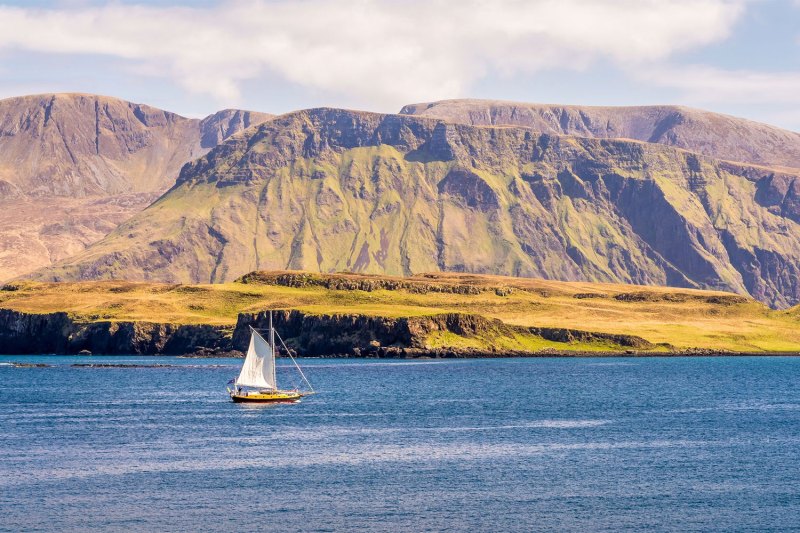Most mortal men have dreamed of chucking it all — the mortgage, the job, the car payment, and the tomato garden — and moving somewhere far, far away. Right now seems like the perfect time to realize that dream. If you’re serious about it, one remote island in Scotland would like to make you a deal.
The ancient Isle of Rum in Scotland’s Inner Hebrides archipelago is looking to grow its community. Town leaders began construction on four modest two-bedroom homes near Rum’s only settlement, the village of Kinloch. For applicants who commit to at least a two-year stay, monthly rent is less than $600. Locals want families or individuals who will actively contribute through hard work, volunteering, and participating in community events. Tourism, child care, food industry, and skilled construction workers are all in demand. Because of the small population, most residents work more than one job. The mayor may also be the mail carrier and the fire chief, too.

So, why Rum? Aside from the fantastic name, it’s textbook remote island living. Situated roughly 30 miles from the Scottish mainland, the tiny spit of land is home to just 30 year-round residents. There are few cars on the island, cell service is spotty at best, medical facilities are a ferry ride away, and regular electricity isn’t guaranteed. There’s just one shop on the island, vegetables must be ordered a week in advance, and the post office is only open on days when the ferry runs. Plus, the official Isle of Rum website warns the weather can be “savage,” and, in summer, the midges “aren’t a joke, so take precautions.” It’s not quite easy living, but the residents promise that it is rewarding. For some, this sounds like a special kind of hell; for others, it’s a dream come true.
For nature lovers, it’s worth noting the Isle of Rum is a National Nature Reserve. The rugged landscape is a dramatic mix of high mountains, vast grasslands, and pristine coastline. It’s also home to a range of wildlife, including goats, deer, ponies, and several breeds of eagle. For anyone who appreciates solitude in the outdoors, it’s not hard to find on Rum.
As people worldwide flow from rural villages to larger cities, communities like Rum are dying. That has prompted many previously unheard-of destinations to find creative new ways to entice new residents. Several small Italian villages, for example, recently started selling so-called “$1 homes” to new residents who promise to renovate and live in those homes for at least a few years. In 2018, the Scottish island of Stronsay put out a similar call looking to lure newcomers to the island, either temporarily or for good. Of course, if you have the means, you could always buy your own COVID-free escape like this private island on Australia’s Great Barrier Reef.
Interested applicants only have until Friday, August 28, 2020, to apply. The first move-ins are expected sometime in September.


